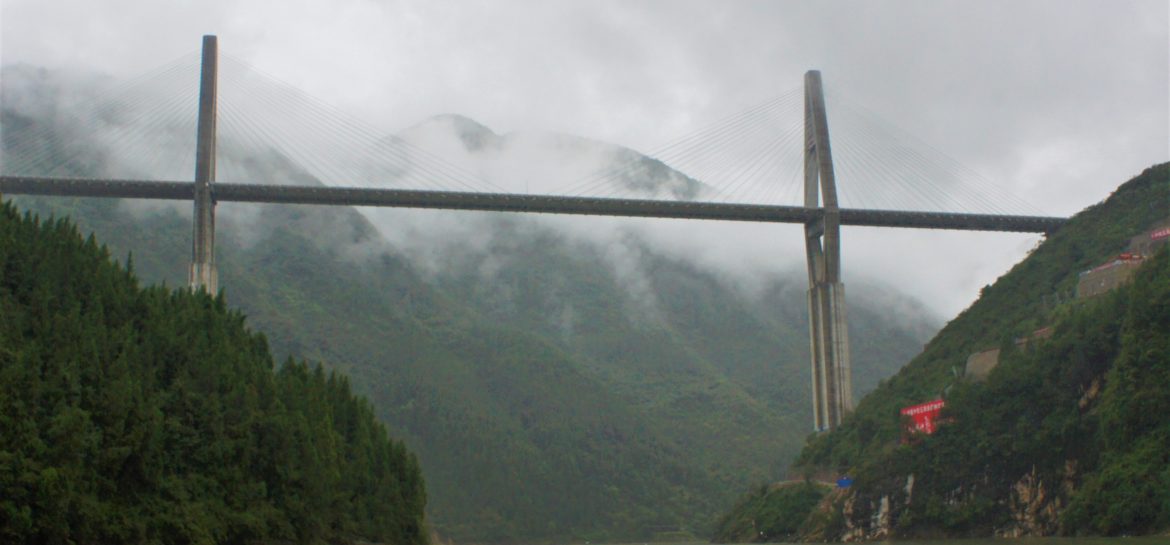
The Yangtze River Part III
Writing to My Wife at a Rainy Night – Li Shang-yin (773-842/Tang Dynasty)
I cannot fortell when to leave Mount Ba for our reunion,
So far the Autumn Lake is rising with the night rain.
I don’t know when to light off our wedding candle again,
We’ll recall what happened tonight with the rainy mountain.

The mist and rain continued with our voyage along the Yangtze. Each day brought new experiences both on and off ship and kept calling to mind the phrase a fellow traveler shared, “This is China.” One afternoon, to while away the time we couldn’t spend outdoors, we treated ourselves to a traditional Chinese Massage, and for Jeff a cupping. Both Jeff and I were left sore from the traditional massage, but Jeff had numerous bruises on his back from the cupping. We are embracing the “This is China” spirit.
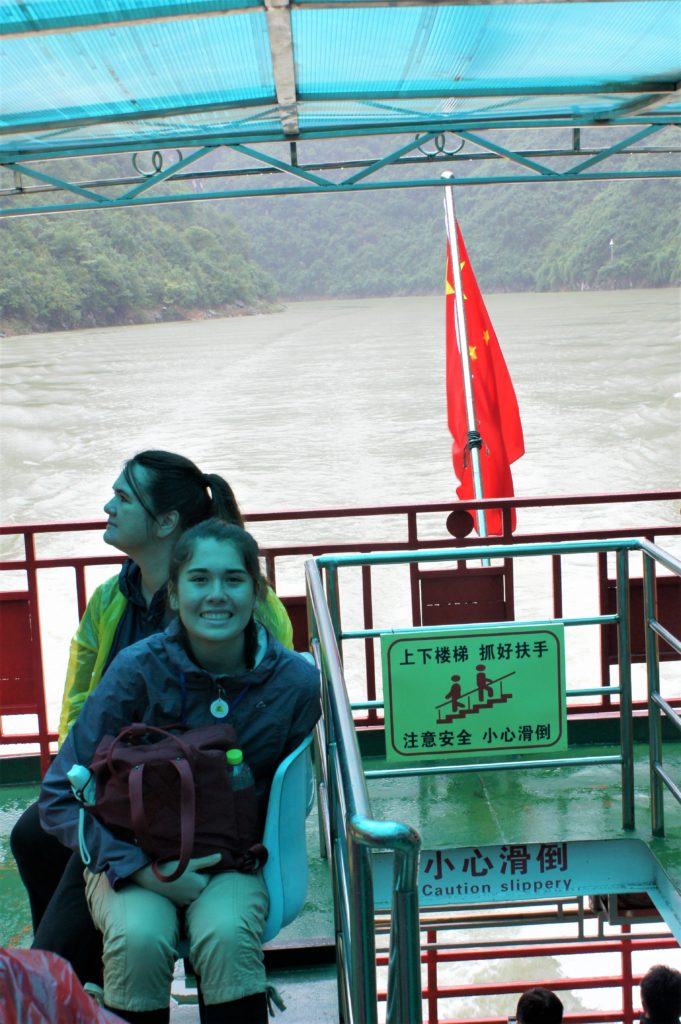
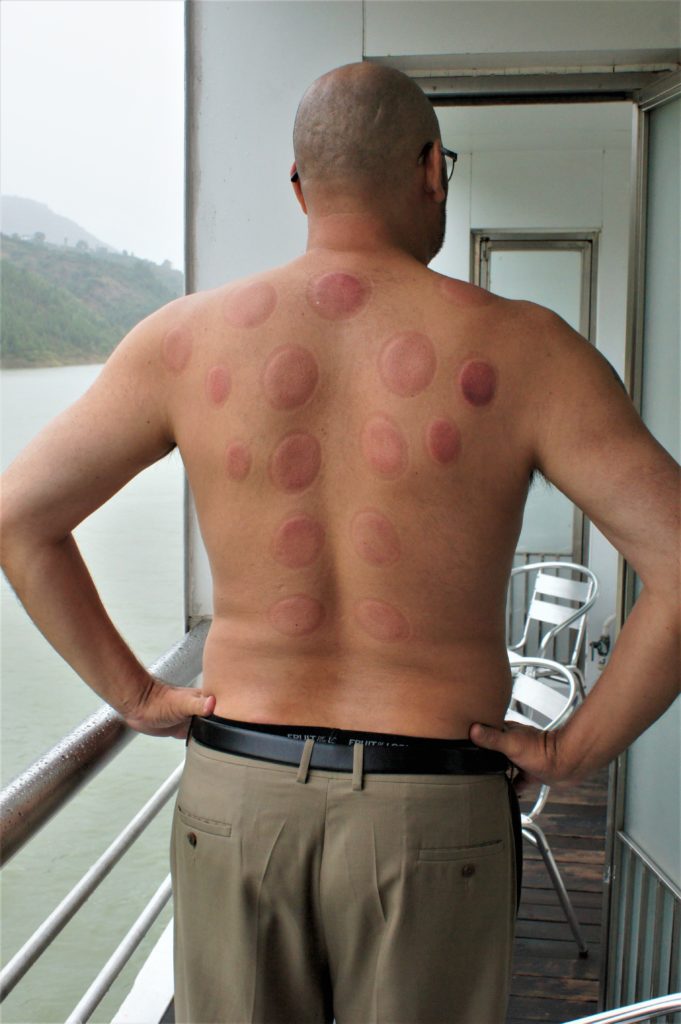
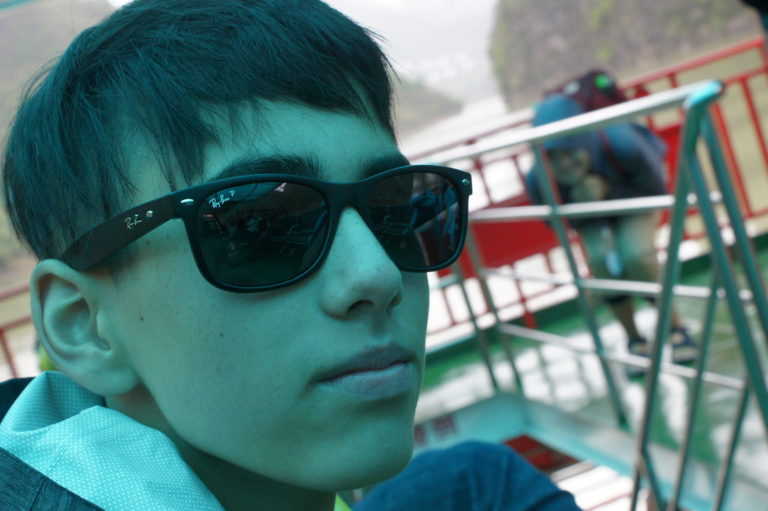
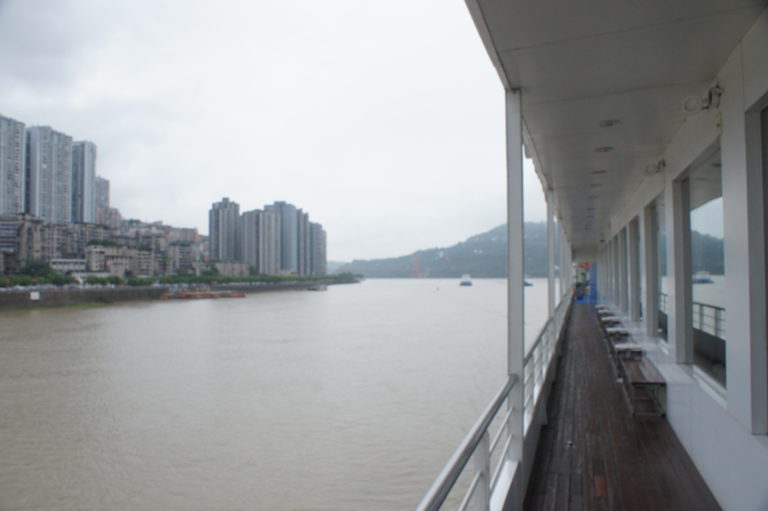
Though the temperature has cooled dramatically in China since our arrival, the humidity is still high. One of the things we’ve learned is that the Chinese really dislike air conditioning and are always battling air in some fashion with those of us more accustomed to it. Our Ayi complains about our air conditioner every time she comes, even when it was 100 degrees outside. I’m taking a Zumba class with local teachers after school and the Chinese and American teachers battle with turning the air on and off during class. As was to be expected then, day after day on the ship I battled with the room staff that kept shutting off our air conditioning and opening our deck doors to let in the moist and humid outside air. This is China!
Our final cruise tours were to more excellent examples of Chinese culture.
Shennong Stream is a smaller tributary to the Yangtze that winds along sharper and stepper gorges and cliffs. This tour takes you off the larger cruise ship and onto a ferry up the gorge to transfer onto a local river canoe paddled and pulled by local boatmen.


Being rowed and pulled by local boatmen along the river was really fun as we raced and listened to local songs of the tribe. The boatmen walk down the steep gorges daily to ferry passengers up and down the stream, rain or shine. We all had a deep appreciation for their daily efforts to share their traditions with visitors.

Each of our daily tours on the cruise started and ended with a walk through a local souvenir marketplace. These markets usually have catchy names like the “Maybe Later Market” or the “Hello Market”. A tip for any future traveler; if you say the phrase the market is named for to any vendor they will hound you mercilessly for a purchase. It’s best to keep quiet until you are ready to buy. Once in Shanghai, we were directed to a local fake market by a salesman whom I mistakenly asked for directions from. He refused to leave us alone after getting to the shops. An hour later he was still trailing us. I was reminded of this as I watched the woman I said “Hello” to in the market running after our bus with a river-book in her hand. This is China!


The Shibaozhai Pagoda is a Buddhist temple built into the steep rock-face of a small island in the river. Known locally as the precious stone fortress, legend is that it was formed by the Goddess Nuwa in a battle with two warring Dukes. The pagoda itself is fascinating in its stepped structure that rises alongside the rocky hill.


The pagoda was built without nails and instead stays together by resting against the rock behind it. Walking up the old wooden stairs, though a bit nerve racking with the hundreds of tourists inside of it, pays off with beautiful views of the surrounding area. The pagoda itself would have been damaged by the rising river waters created from the dam. To preserve its value, they created another dam, or moat, around the island to protect it. As you enter the pagoda you are actually below the level of the river and, as you ascend the stairs, you rise to and then above river level.




Most of the passengers on our cruise were Chinese. The western travelers were grouped together at several tables in the dining room for daily meals. Our mealtime companions were two elderly British couples and a young professor from the US and his Shanghainese fiance. Sitting to the table next to us we befriended a couple from Dusseldorf, Germany, and a teaching couple from Cape Town, South Africa, and met yet another teacher from Colorado! More so than other places I’ve traveled to, traveling in China brings people together. We made fast friendships with our fellow explorers. This is indeed China!
